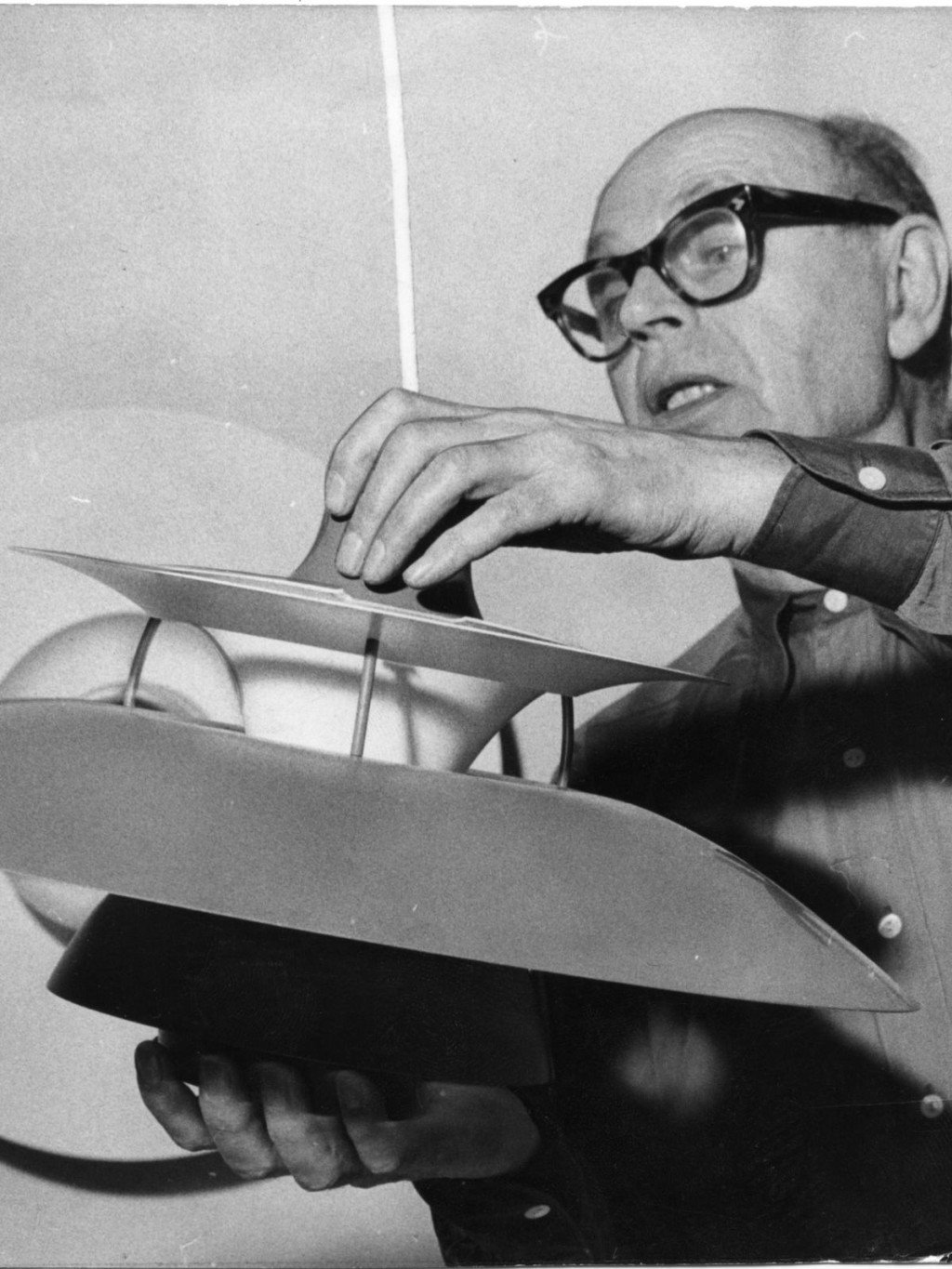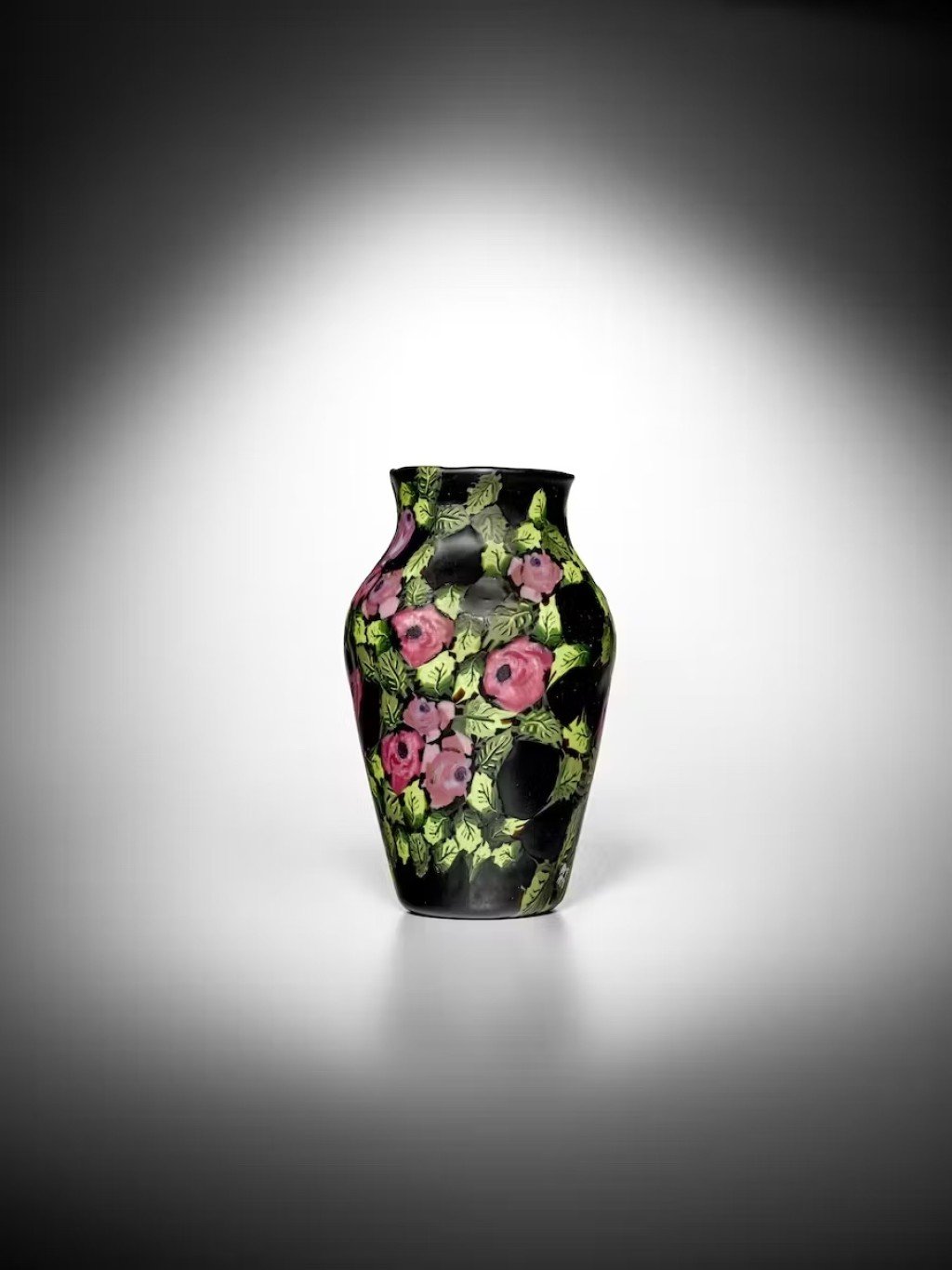While far less well known than her Danish compatriots Arne Jacobsen and Finn Juhl, architect and designer Nanna Ditzel (1923-2005) nonetheless occupies a prominent place in the pantheon of great Scandinavian designers of the 20th century. Some of her creations have remained very popular in the minds of Danes and have acquired an iconic status in the history of post-war furniture. A look back at a career of exceptional longevity (1/2 century) marked by remarkable design pieces.

Nanna Ditzel, portrait.
Nanna Ditzel studied at the Royal Danish Academy of Fine Arts and graduated in 1943 with a degree in cabinet making. Kaare Klint (1888-1954) (https://www.design-market.fr/), considered the father of Danish design, was one of her teachers. In 1946, she finished her university studies and obtained a degree in architecture. However, it is in the world of furniture design that Nanna Ditzel will carry out her entire career.
The latter is spread over nearly 5 decades and can be divided into 3 major phases. It was at the Academy of Fine Arts that Nanna Ditzel met her 1st husband and collaborator, Jørgen Ditzel (1921-1961), who was an upholsterer. The couple established their design studio. During the 1950s and until her husband's untimely death, Nanna Ditzel would make a name for herself in the post-war design community.

Nanna Ditzel and Jørgen Ditzel.
In the 1st part of her career, Nanna Ditzel with her husband designs furniture that is true to the DNA of modern Danish design: simplicity, comfort and quality, such as the "Ring" armchair that the couple created in 1958. The seats they design are in the spirit of those created by Hans J. Wegner (1914-2007), another legendary Danish designer, armchairs with slightly curved backs.

Pair of "Ring" chairs, design: Nanna and Jørgen Ditzel. An "enveloping" and comfortable design, in the image of Danish design. The structure is made of oak, the seat and backrest are covered with sheepskin.

FDanish Nanna Ditzel style chair, 1950s.
The Ditzel couple works with very different materials. As true Scandinavians, they work with wood, and in particular teak, but they do not hesitate either to rub shoulders with other materials such as wicker or rattan. In 1959, they made an egg-shaped armchair suspended in rattan. Particularly noticed for this piece that has become an icon of vintage design, the couple gains notoriety.

danish-vintage-teak-desk, model ND93, design: Nanna and Jørgen Ditzel, 1950. The piece is made by Søren Willadsen in Denmark. It is a simple, elegant and functional piece of furniture.

"Perlen" lounge chair, design by Nanna and Jørgen Ditzel for the Japanese publisher Kitani, 1951. The original prototype was made by Søren Willadsen. A beautiful teak piece!

C"Perlen" long chair, design by Nanna and Jørgen Ditzel for Japanese publisher Kitani, 1951. Back view.

The famous rattan "hanging egg" armchair. Design: Nanna and Jørgen Ditzel, 1959.

"Madame" rattan armchair, design: Nanna Ditzel, 1951. Danish style adapted to rattan, chic and elegant!

Eall of the furniture designed by the Ditzel couple in rattan. In the center sits the "hanging egg" chair.
Together, Nanna and Jørgen Ditzel won a variety of international awards-silver and gold medals at the Milan Triennial. In 1956, they received the Lunning Award, the most prestigious annual award in Scandinavian design. A protean designer, Nanna Ditzel works with glass and rubber, and produces not only furniture, but also textile and jewelry pieces, not to mention tableware. In 1954, she began a collaboration with the Danish silverware company Georg Jensen. This collaboration shows the taste of the designer for an organic design that follows the lines of the body. Her jewelry is elegant, sleek, and made to last. In fact, the pieces she designs for Jensen are still featured in the Swedish silver house's catalog today!

Sterling silver necklace, design: Nanna Ditzel for Georg Jensen. In 1956, Nanna Ditzel created the "Capsule" collection. A series of jewelry with organic shapes that leave an impression of movement and ease. A timeless collection that the jeweler relaunched.

Subtle and sophisticated bracelet formed from a series of almost leaf-shaped pieces. Design: Nanna Ditzel for Georg Jensen. Elegance and discretion!

Bold, sculptural sterling silver ring that wraps around a finger. Design by Nanna Ditzel for Georg Jensen. The ring gives the finger a long, elegant look. Originally designed in 1955, the design is now being relaunched at the Danish jeweler.

Worn sterling silver ring, design Nanna Ditzel for Georg Jensen.

BSterling in sterling silver, design by Nanna Ditzel for Georg Jensen, 1955. The lock on the bracelet is not hidden but treated as an integral part of the design itself.

Bworn sterling silver bracelet, design by Nanna Ditzel for Georg Jensen, 1955.

Halingdal fabric, Nanna Ditzel design, 1965, created for Danish textile brand Kvadrat. A classic of home furnishings, composed of 70 e wool and 30 e viscose. Kvadrat today declines this fabric in a wide chromatic palette.

Danish vintage rug "Unikaeteppe" in blue fabric, design by Nanna and Jørgen Ditzel, 1960. This rug has many shades of blue squares, it is made of kvadrat fabric.

TDanish vintage "Unikaeteppe" rug in blue fabric, design by Nanna and Jørgen Ditzel, pattern detail, 1960.
After her husband's death in 1961, Nanna Ditzel continued her successful career in the 1960s. She is credited with the creation of the famous "Toadstool" series of stools, which was an immediate success and made its mark on her era.

Table and stools "Toadstools" series, design Nanna Ditzel, 1962. Playful pieces of furniture designed for rambunctious children to sit on, but also to use as tables for drawing, stacking, rolling, climbing on...

Nanna Ditzel poses next to her "Toaadstools." On the left is the "Lulu" wooden cradle created in 1963 and considered a Danish design classic.
In 1968, she married a second time, to German-born businessman Kurt Heide. The couple lived in London for nearly 20 years. She continues to work for Danish and British companies. Together they set up an international design center and showroom called Interspace. It was a period during which the designer experimented with new materials, such as fiberglass.

In the late 1960s, Nanan Ditzel experimented with synthetic materials, as here with a molded stool with arms and a backrest secured with bolts, 1969.
This second chapter of Nanna Ditzel's life came to a close in 1985, when her second husband died. Nanna Ditzel then returned to Copenhagen, set up her own studio again and began a very active third part of her life. During the 1980s and into the 2000s, the designer designed more daring and expressive furniture pieces. Her collaboration with the Danish publisher Fredericia Furniture (in existence since 1911) resulted in the creation of the Bench for two with its screen-printed finish, and the Trinidad chair, which instantly became a "hit" for the Danish furniture manufacturer, which at one point was producing a thousand chairs a month to meet demand!

"Bench for two" table and seat, Nanna Ditzel design in collaboration with Fredericia Furniture, 1989. An incredible piece, a double-backed bench or chair on which the occupants sit at right angles and can converse. The bench and its quarter-circle table are made from one millimeter-thick plywood, screen-printed with a mesmerizing circular pattern.

C"Trinidad" chair, design Nanna Ditzel for Fredericia Furniture, 1993. The chair's name comes from the facades of the Victorian houses on the island of Trinidad, which play with the daylight. The cutouts in the chair's wood give it a fan-like appearance and filter the light playfully.

Set of 6 "Trinidad" chairs, design Nanna Ditzel for Fredericia Stole, 1993. In 1995, this chair received the ID award, the highest design honor in Denmark.
Late in life, Nanna Ditzel creates furniture with a strong personality. How about the extraordinary butterfly-like design of the Buttefly chair? Until the end of her life, Ninna Ditzel remained active. In 1999, for example, for the centenary of the Danish manufacturer Getama, she developed a series of furniture designed to redesign the interior of a sofa and an armchair. Internationally recognized, Nanna Ditzel symbolizes elegant, distinctive and quality design. She remains one of Denmark's most acclaimed designers today.

Pair of "Butterfly" Chairs, Nanna Ditzel design, 1990. A stunning chair cut from a single 2mm thick folded wood fiberboard and supported by 6 legs that evoke the legs of a butterfly!

"Joy" Mirror and Dressing Table, design Nanna Ditzel for Getama. The Joy makeup mirror and dressing table were designed to meet a practical requirement. A set with a functional and timeless design.

Bench for the "Joy" interior collection, design Nanna Ditzel for Getama, 1999.

"Mondial" series chairs, design: Nanna Ditzel for Getama, 2000.
François Boutard





